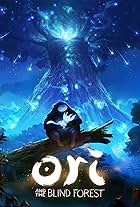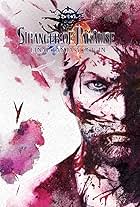Capcom gets its fair share of criticism for milking its franchises todeath, so when it takes a chance on something different it's usuallyworth a look. Ghost Trick: Phantom Detective certainly qualifies: it'sa totally original IP that puts a unique spin on the adventure genre,which has sorely needed some innovative ideas.
The player takes on the role of a ghost who's spirit can interact with nearby objects, like a poltergeist playing tricks on unsuspecting victims. You'll have to use whatever you can, including your wits, to find out who you are and why you died. The plot and characters are a big part of what makes this game special, so any further details would only ruin the fun.
When you enter the "Ghost World", you can clearly see objects that can be possessed highlighted in blue. Unlike in most point-and-click adventure games, you don't interact with more than one item at a time. Unfortunately, even as a spirit you aren't able to float around freely: you have a limited reach, forcing you to hop from one object to another. Often a big part of a puzzle's solution is figuring out how to get from point A to point B, since you can only move if you are able to attach to an object's "core". You'll also move from one location to another by jumping into a phone and dialing a number you've learned by eavesdropping on conversations.
Most puzzles begin when you come across a dead body. By possessing the corpse you can rewind time to learn what happened to them four minutes before their death and possibly save them. In these situations you are free to rewind the clock whenever you want to try to change a person's fate.
In later chapters you'll have access to an additional Ghost Trick that allows for more complex puzzles, but it never gets too complicated. It's a simple design that can be played entirely with the stylus, and while some of the puzzles can be frustrating they're never boring.
Ghost Trick features cartoony 3D characters but they're shaded to appear completely two dimensional. This allowed the designers to create silky smooth animations for each and every character which really brings them to life. This is particularly important given that most of the time you'll be watching a scene unfold and waiting for the right moment to interrupt the chain of events. Backgrounds are detailed 2D cutaways that feel a bit like dioramas, and in an odd throwback to Maniac Mansion, the evil characters have blue skin.
The music helps put you in the sleuthing mood, and ups the tension when your target is about to be killed. However, the game lacks voice-overs which would have really benefited the many dialog sequences and it doesn't make very good use of the DS's dual screens. The top screen is really only used to show what object you are currently possessing and how much time you have left before a person's fate is repeated.
Ghost Trick: Phantom Detective is really the complete package. It's unique, has lovely graphics and music, and the game play is intuitive and entertaining throughout. The main problem with Ghost Trick (and adventure games in general), is that the puzzles have very specific solutions, which means a lot of trial and error. You'll have to repeat certain sequences over and over until you figure things out, which can get frustrating. As a result of this linearity, Ghost Trick probably won't entice players to play it more than once.
If you have the patience for this kind of game you will not regret playing it. Now that it is also widely available on iOS, players of every stripe have no excuse not to try it. The iPhone version is cheaper and has higher resolution graphics.















